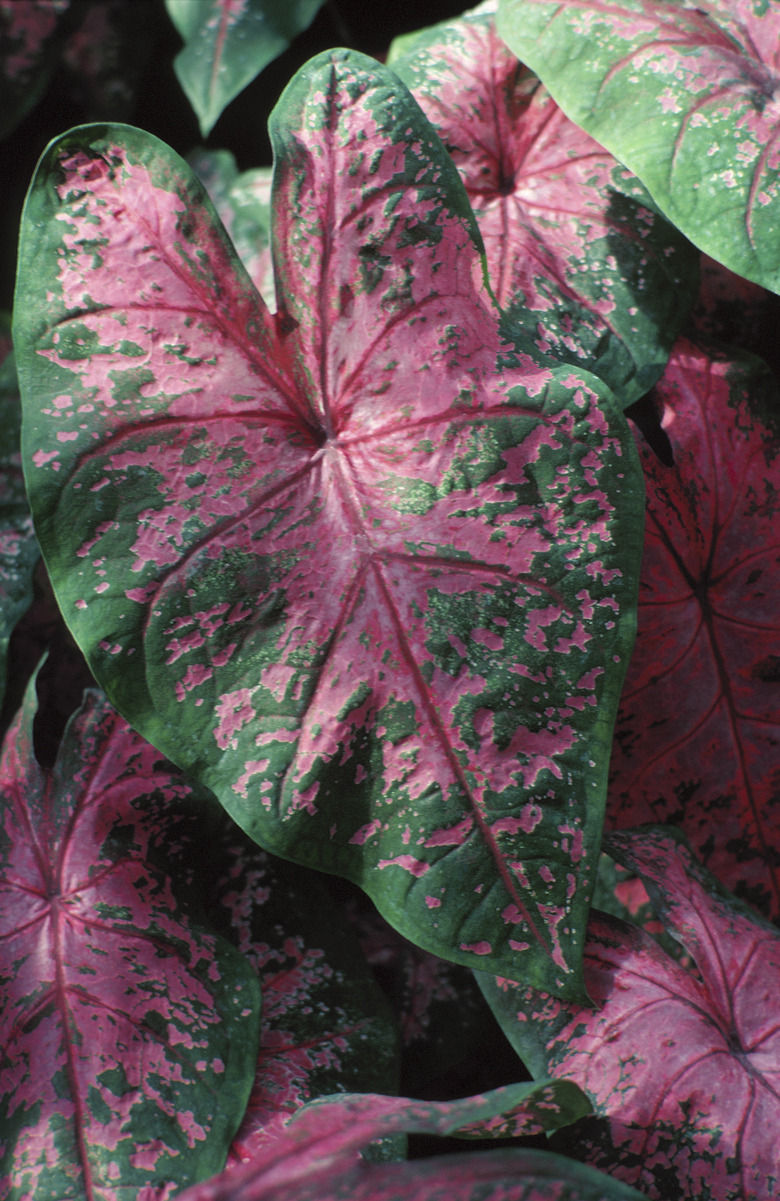Caladium Leaves Are Drooping
Caladiums (Caladium x hortulanum) are outstanding plants that can be grown in warm or cool zones. You can grow them outdoors year-round in U.S. Department of Agriculture plant hardiness zones 8 through 11, outdoors in summer in most climates, or as houseplants. Caladiums are not known for having serious pest problems, but they do need a lot of water and warmth. If you are having problems with your plant's leaves drooping, check the plant over carefully to discover the cause.
Water
Water
Soil moisture is critical for caladiums. If they are not receiving a steady supply of water, their leaves will wilt. After a period of time without water they will go dormant and drop their leaves. Optimal conditions are soil that is moist to the touch and well-draining. Never allow caladiums to sit in pooled water, as the tubers will rot. To retain moisture in the soil outdoors, apply 2 to 3 inches of mulch around the plant.
Cold
Cold
Caladiums come from tropical Brazil and do not like low temperatures. When air temperatures drop below 65 degrees Fahrenheit, including at night, the leaves will begin to droop and eventually collapse. If the plants are in pots, bring them indoors and set them back outside during the daytime. If they are in the ground, try covering them with an old sheet to retain heat at night.
Fertilizer Salts
Fertilizer Salts
Fertilizer that is applied to the soil and not taken up by the plant can accumulate near the root zone as salts. As the concentration of salts builds up in the soil it inhibits the plant's ability to take up water. A buildup of salts can be prevented through long, deep waterings, rather then short frequent ones. Deep waterings wash salts further into the soil and away from the root zone.
Potted Plants
Potted Plants
Leaf droop is a sign of salt buildup in the soil of potted caladiums. Excess salts can be seen as a yellow or white crust on the top of the soil or a ring around the inside of the pot. In pots with drainage holes, you can correct this by pouring twice the volume of water a pot holds onto the soil and letting it run out the drain hole. Pour the water in a continuous stream. To prevent salt buildup, leach potted plants every four to six months. Severely crusted plants will need to be repotted.
References
- University of Florida IFAS Extension: Growing Caladiums in the Florida Garden
- University of Florida Gardening in a Minute: Caladiums
- University of California, The California Garden Web: Soluble Salts
- University of Minnesota Florifacts: Caladium Production
- University of Florida IFAS Extension: Caladium x Hortulanum: Caladium
